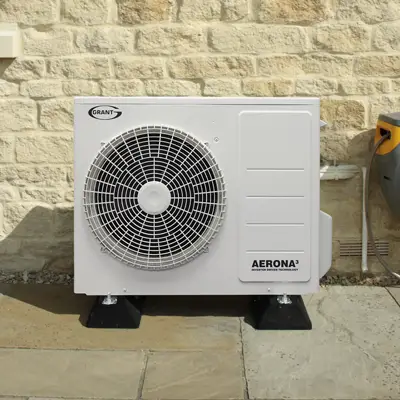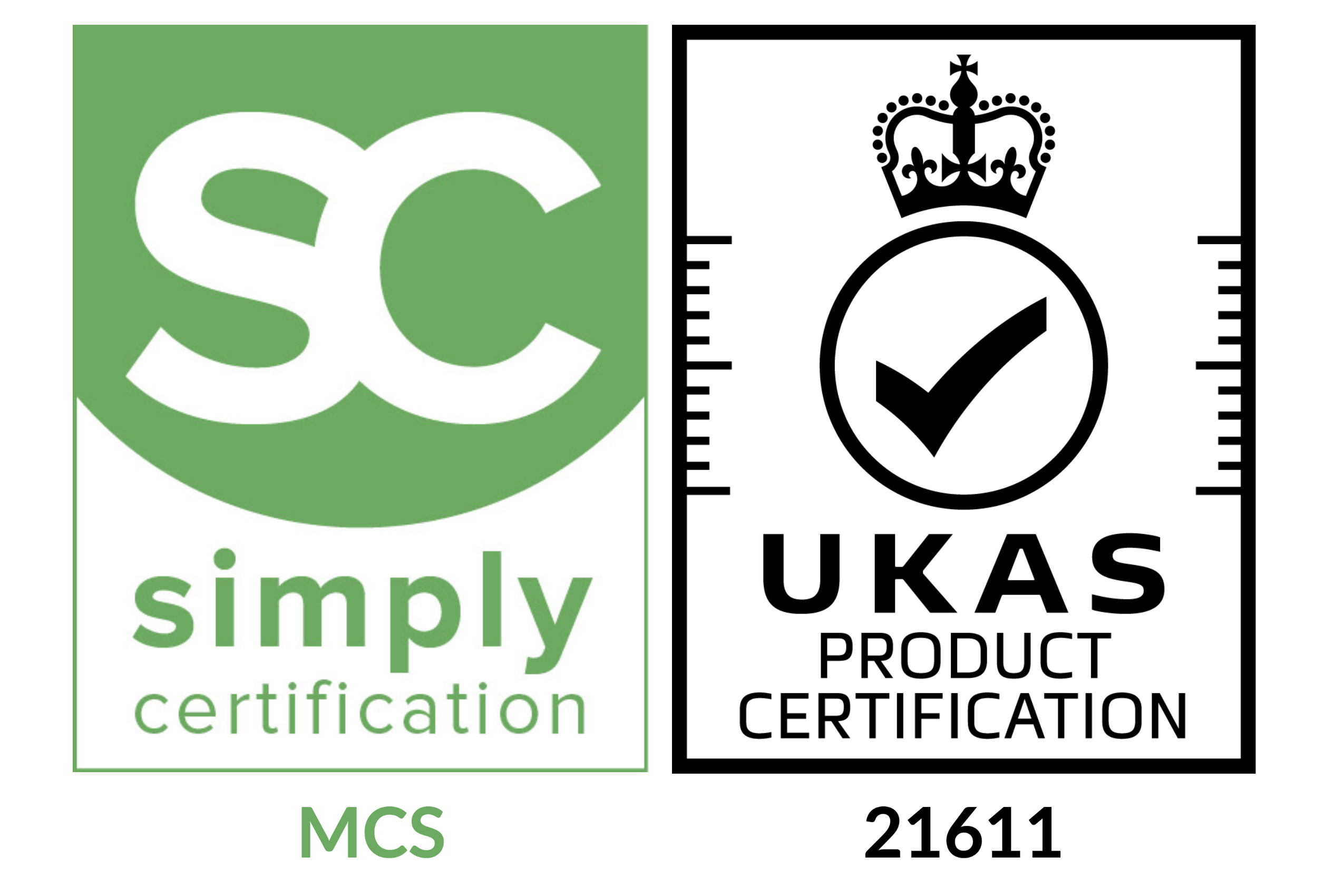High efficiency heating with an Air Source Heat Pump
You could even receive £7,500 off the cost of an Air Source Heat Pump through the Boiler Upgrade Scheme (BUS)
Get a free quoteAir Source Heat Pumps from leading manufacturers

Ideal Heating Logic Air
The Ideal Logic Air heat pump range offers dependable heating and hot water for your home. Designed for efficiency and ease, it provides a simple, low-carbon solution to keep you warm and comfortable throughout the year.
- Quiet Mark Approved
- Low Carbon R32 refrigerant
- Intuitive Smart Heating Controls

Grant Heating Aerona3
Compact in size and highly efficient, Grant Aerona3 heat pumps utilise R32 refrigerant to provide a low-carbon solution to fulfill your heating and hot water requirements all year round.
- Compact footprint, designed for minimal impact on surroundings
- Operate with low noise levels
- All models eligible for Boiler Upgrade Scheme
What is the Boiler Upgrade Scheme?
Get a free quoteWhat is an Air Source Heat Pump?
An air source heat pump is an energy-efficient system that transfers heat from the outside air into a building to provide heating and hot water. Even in cold temperatures, it can extract heat from the air and use it to provide heating via radiators, underfloor heating and heat hot water cylinders. It works similarly to a refrigerator in reverse, using electricity to power a compressor that boosts the temperature of the extracted heat.
Why choose an air source heat pump?
Air source heat pumps are a low-carbon alternative to traditional gas or oil boilers and can significantly reduce energy bills and carbon emissions.
Heat pumps require electricity to run, however, the heat generated far outweighs the energy required to run the heat pump with efficiency ratings generally over 300%. When you compare this with an average new boiler efficiency rating of 92% and older boilers which can be as little as 60% efficient it’s easy to see why air source heat pumps are becoming a popular way of heating your home, particularly in areas where there is no mains gas available.
With the Boiler Upgrade Scheme you could receive £7,500 towards the cost of installation as well.
The Energy Saving Trust have produced this video which we hope will help you.
Get a free quote


